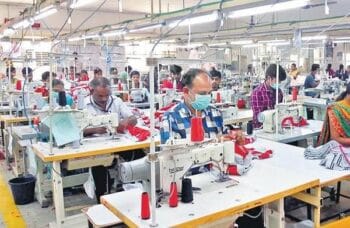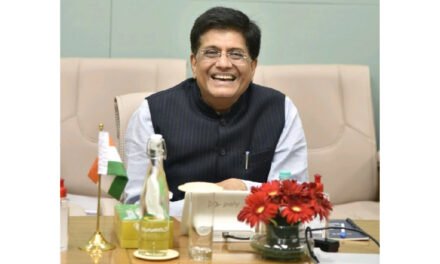 Textile and clothing exports from the country between April and December 2021 were up 18 percent in dollar terms and almost 25 percent in rupee terms compared to the corresponding period in 2019, according to data available.
Textile and clothing exports from the country between April and December 2021 were up 18 percent in dollar terms and almost 25 percent in rupee terms compared to the corresponding period in 2019, according to data available.
While the total textile and apparel exports in April – December 2019 were to the tune of $ 25 bn, it increased to almost $30 bn during the same period last year. In rupee terms, the exports grew from Rs. 1, 77,803 cr to Rs. 2, 21,528 cr. While cotton yarn, fabric and made-ups saw more than 40 percent growth in dollar and rupee terms, readymade garment grew only 2.69 percent in rupee terms (between April and December 2021 compared to the same period in 2019) and saw a negative growth of 2.81 percent in dollar terms.
Overall textile and clothing exports are expected to be a little more than $ 40 bn this financial year (2021-2022) compared as against the target of $ 44 bn. The main area of concern is exports of apparels, Textiles Secretary Upendra Prasad Singh told.
Many garments units, especially those located in Tamil Nadu, Karnataka, national capital region, and Punjab remained shut between April and June in 2021 because of the spread of COVID-19. “We have seen growth (in exports) in terms of value and quantity, especially during the last three months,” said A. Sakthivel, President of Federation of Indian Export Organisations.
According to Raja M. Shanmugham, President of Tiruppur Exporters’ Association, garment exports from Tiruppur this fiscal is expected to be almost Rs. 32,000 cr as against Rs. 24,000 cr last financial year. But, the growth is mainly in terms of value. While the exporters have orders, high raw material prices are a deterrent to increase in volume. If the current trend in raw material prices continues, sustaining this will also be a challenge, he said.
“There is a continuous spike in cotton yarn prices. Even if I have orders, I am unable to service those orders for want of funds,” he said. Majority of the garment exporting units are MSMEs and they are labour-intensive and vulnerable to several external factors. The government should step in to bring stability in raw material prices, Shanmugham said.





















